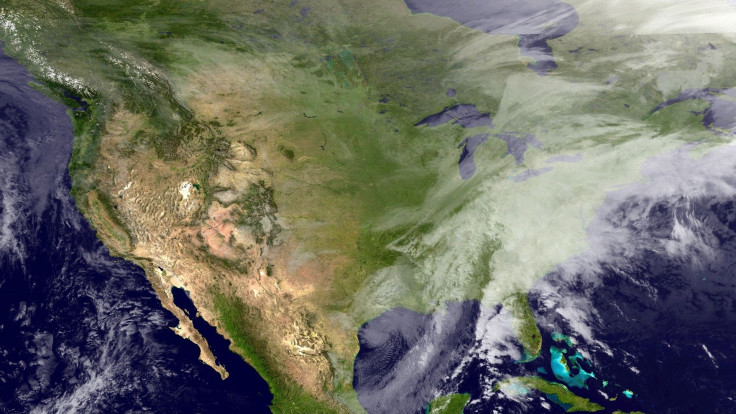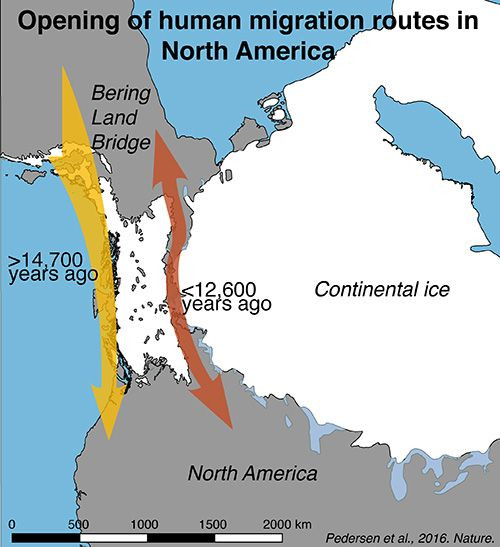How Did Ancient Humans Reach America? New Study Refutes Long-Held Theory

Scientists have long thought the first settlers in North America arrived at the continent through an ancient land bridge connecting Siberia to Alaska. These people, after their arduous trek across the Bering land bridge — a region that is now the Bering Strait — had to wait for the massive glaciers that covered the land, now known as Canada, to recede in order to move south and populate the continent.
However, according to a new study published Wednesday in the journal Nature, this established theory does not hold up to closer scrutiny.
An international team of researchers extracted ancient plant and animal DNA from lake sediment cores in the region that was once covered in glaciers, and found, through a process known as “shotgun DNA sequencing” that before roughly 12,600 years ago, there were no plants or animals in the area. This means that humans attempting to cross the chilly passage at the time would not have had the resources needed for their survival.
“The ice-free corridor was long considered the principal entry route for the first Americans. Our results reveal that it simply opened up too late for that to have been possible,” co-author Mikkel Winther Pedersen, a PhD student at the University of Copenhagen, said in a statement.
According to the research, the corridor, which emerged nearly 13,000 years ago, is believed to have been roughly 930 miles long. At first glance, this thawing of glaciers seems to coincide with the dispersal of the Clovis people across America. But, as the authors of the study explain, this corridor did not become passable until long after the Clovis people had reached south of the glacier wall.

Moreover, the researchers also said that there was “compelling evidence” to suggest that the Clovis were not even the first people to have made their home in America.
“The bottom line is that even though the physical corridor was open by 13,000 years ago, it was several hundred years before it was possible to use it,” lead researcher Eske Willerslev, an evolutionary geneticist in the Department of Zoology and Fellow of St John’s College, University of Cambridge, said in the statement. “That means that the first people entering what is now the U.S., Central and South America must have taken a different route. Whether you believe these people were Clovis, or someone else, they simply could not have come through the corridor, as long claimed.”
So how did the first Americans get to America? The probably took the coastal route, travelling down the Pacific coast. However, that is only a hypothesis — albeit the most likely one — for now.
© Copyright IBTimes 2025. All rights reserved.






















